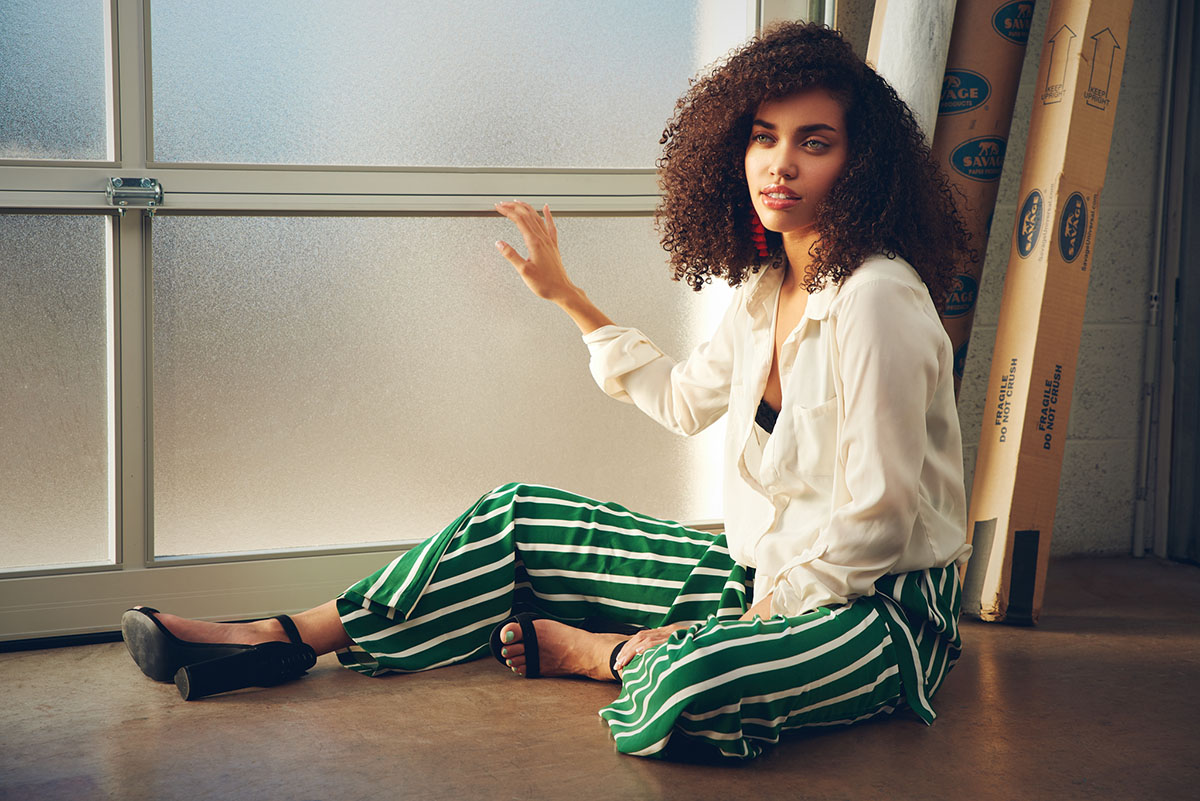Images That Immortalize
Nader Abushhab captures classic fashion and environmental portraits with his Tamron SP 45mm VC, SP 24-70mm VC G2, and SP 70-200mm VC G2 lenses.
More Photo Tips | Video Gallery | Photo Gallery | Enewsletter sign-up
By Jenn Gidman
Images By Nader Abushhab
Like many photographers with a lifelong love of images, Nader Abushhab fiddled around with his camera stretching back to his high school days. But it wasn't until he moved from Chicago to Arizona for college, finished school, and began working in multimedia design and animation that he took a deeper dive. "I saved money to buy my first DSLR and took a ton of bad photos at first," he says. "I tried various types of photography and weeded out what I didn't like."
What it turns out he did like was taking pictures of people. "I discovered I could immortalize my subjects, with photos I created," he says of his current work in fashion photography and environmental portraiture. "Today, I try to make my photos iconic and timeless, much like the work of classic photographers from the last century."
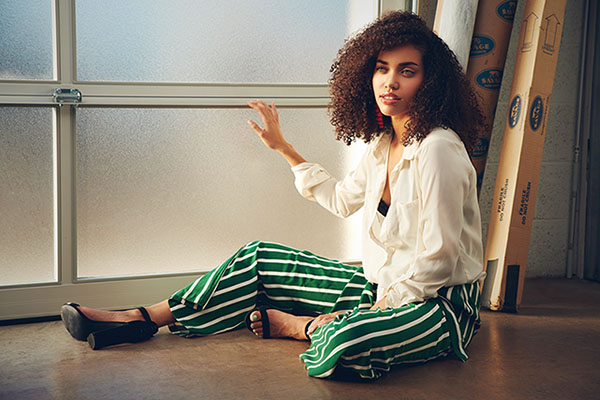
SP 24-70, 70mm, f/5.6, 1/125 sec., ISO 100
Click image to view larger
To create that style of classic portraiture, Nader relies on his Tamron SP 45mm F/1.8 VC, SP 24-70mm F/2.8 VC G2, and SP 70-200mm F/2.8 VC G2 lenses. "The 70-200 is my go-to lens," he says. "When I was initially searching for a lens I could use to make an income with photography, I chose the 70-200 for its versatility and reach for headshots. Then I started to realize that some of my favorite portraits were made with wider lenses, so I picked up the 24-70 and the 45. The 24-70 is wonderful when I want a little more versatility in those wider angles. Meanwhile, I use the 45 simply because I love the look it gives me. Medium-format photography has long been one of my favorite ways to take portraits, and the 45 replicates that look for me. It's a phenomenal lens that's incredibly sharp."
The backgrounds Nader works with are client-dependent, especially for commissioned environmental photos, but if he has more control, there are certain aspects he looks for. "In general, I try to find a scene that offers me visually attractive lines, with as little distraction as possible, and elements that complement my subjects," he says.
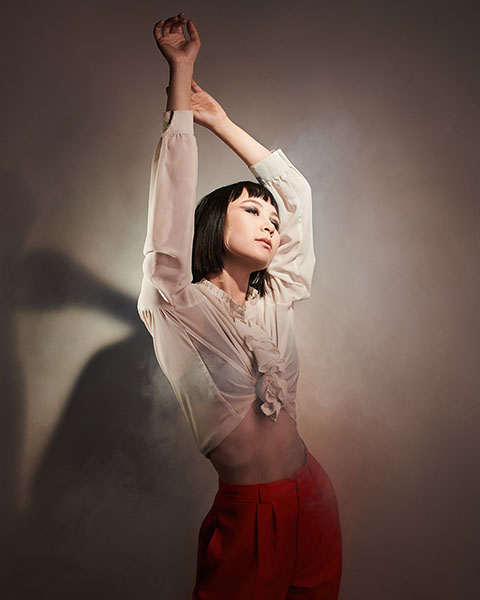
45mm, f/5.6, 1/160 sec., ISO 100
Click image to view larger
Because he helps manage a studio in central Phoenix, Nader has the space to put together various lighting setups, both simple and complex, for his portraits. "Of course, I feel that any photographer who wants to use artificial lighting should first have a grasp of how to wield natural lighting," he says. "But I'm really enjoying playing around with different combinations of the two. I now understand that I can use more focused light to sculpt a person's face, or that person in general, and then use softer lights to add a more flattering look on top of that."
Nader likes to use these lighting combinations for dramatic effect whenever possible, whether he's emulating a scene from Blade Runner (seen in the photo here with the model who bears a resemblance to Sean Young's character in the movie) or setting up a smoke machine for an assignment involving some of the area's top models. "There's a challenge every year for Phoenix Fashion Week where they send their top 40 models on a photo shoot," he explains. "This time around, I got 20 of the models to photograph, and another photographer got the other 20. We wanted to do something that was still fashion-oriented, but with more of a science-fiction vibe. My lighting setup was pretty intense, with about a dozen lights. I sculpted with hard light and soft light and kept building until I had a beautiful mix of color and non-gelled strobes."
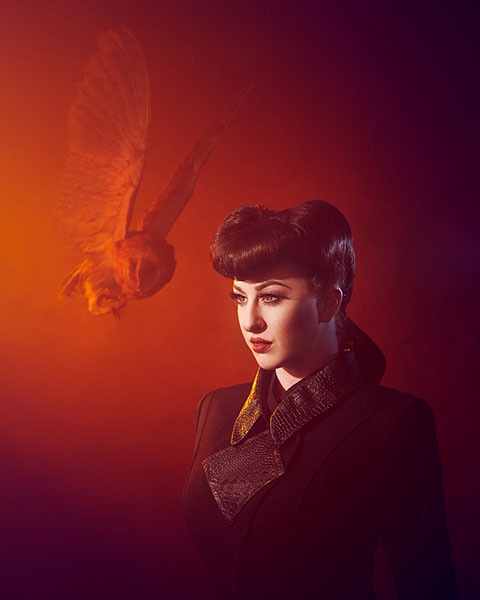
SP 70-200, 110mm, f/8, 1/60 sec., ISO 400
Click image to view larger
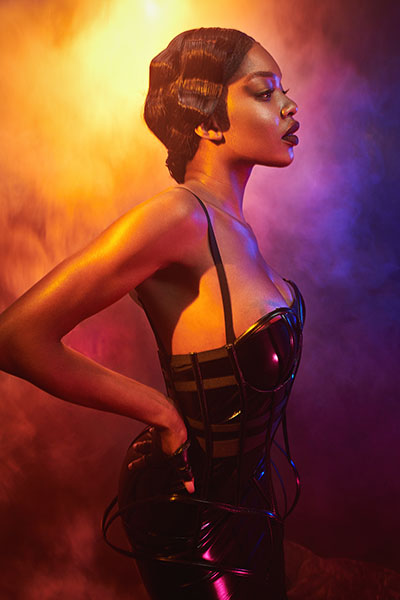
SP 24-70, 31mm, f/8, 1/10 sec., ISO 400
Click image to view larger
How Nader lights men and women has evolved over the years, but he now realizes it's less about the person's gender and more about what he witnesses when he observes them one on one. "It honestly depends on the person," he says. "In general, I can probably go a bit harder on the light with the guys, but the best lighting (and angle of the light) for one guy could be totally different for another guy. The same goes for women, and for lighting between the sexes: I've used a pose and a certain lighting setup for a man, and that exact same scenario works equally well with a female model. I basically wait until my subject is in my studio and start from zero."
To elicit natural poses and expressions from his models, Nader first ensures he has all of his technical regimen down, so he doesn't get bogged down by equipment distractions. "Then I just try to connect with my subjects on some level, by having conversations and building their confidence up while we're going about the shoot," he says. "If they're feeling unsure about anything, it's going to make the shoot much more tense."
Establishing that comfort level means walking his subjects through what to expect from the shoot, then working on the camaraderie. As they're shooting, Nader will start to gently direct how they're standing or posing—"I'll let them know if their fingers look too clawlike in the way they're clenched, or if their foot or arm is too close to the camera"—all the while reassuring them that only the best images will see the light of day. "I let them know that we're experimenting together," he says.
Converting to black and white is another tool in Nader's workflow. "I love the classic look of black and white," he says. "It brings different strengths into a photo and, because we don't see with our eyes in black and white, adds an almost otherworldly look to the images. You see the tones you don't usually see, so the image pops out at you. I like to set my camera to monochrome so I can watch light fall on the subject and understand where the highlights and shadows are meeting each other. You can see that in this Mad Men-like portrait that I was trying to create along the lines of a Time magazine cover, or in the photo of the girl tilting her head—it's a clean, go-to, editorial-style portrait I love to do."
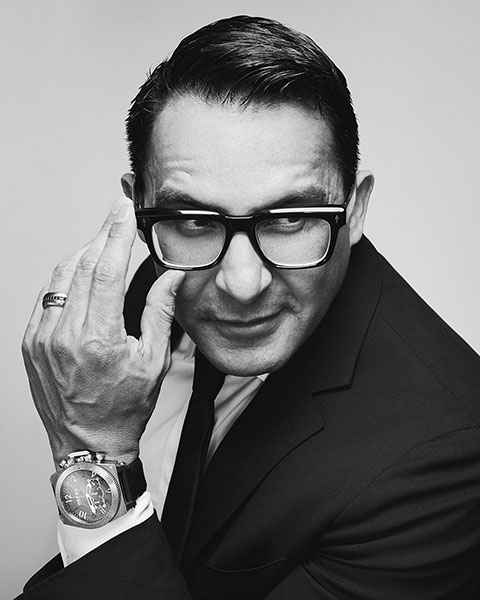
45mm, f/8, 1/200 sec., ISO 100
Click image to view larger
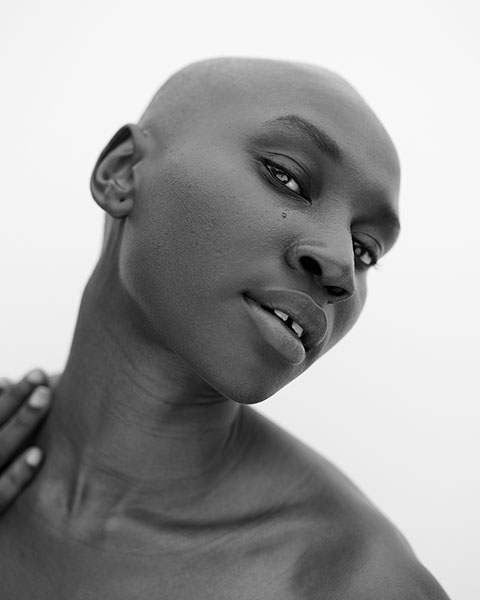
45mm, f/2.2, 1/800 sec., ISO 100
Click image to view larger
Nader's post-processing routine is a simple one, as he prefers to do mostly everything in-camera. "I typically edit just for clean-up purposes," he says. "I know many photographers who are amazing digital artists and I once found that direction tempting, but then I realized the images I've loved and been inspired by for years aren't the ones by digital artists, but by classic photographers and artists. And so my post-processing takes a minimalist approach, letting me focus on what I really want to focus on: the art of photography."
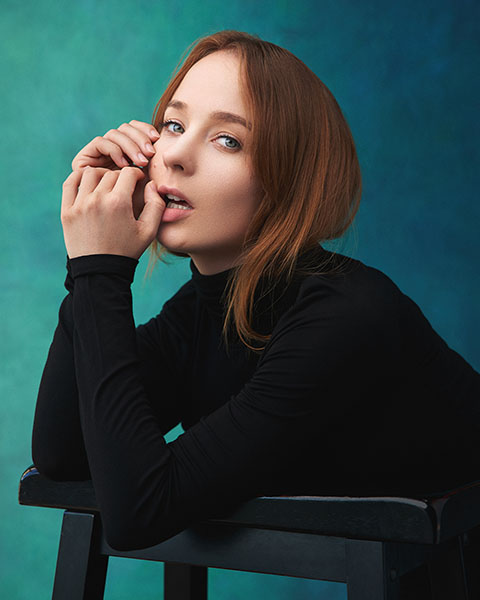
SP 24-70, 70mm, f/4.0, 1/125 sec., ISO 100
Click image to view larger
To see more of Nader Abushhab's work, check out his website or his Instagram.
More Photo Tips | Watch Videos | Learn More About Tamron Lenses | Photo Gallery
